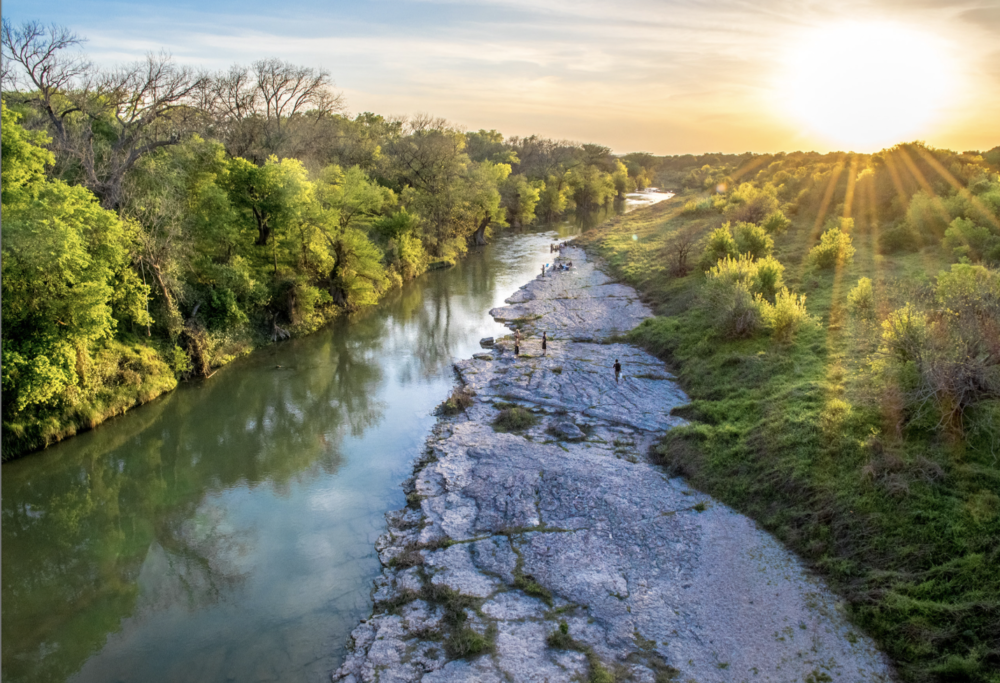
Texas Hill Country facing threats to its habitat, report shows
Christopher Green | Staff Reporter
The Texas Hill Country Conservation Network held an online webinar to discuss its State of the Hill Country Report. The report outlines ways to preserve the Hill Country and some of the dangers it’s facing due to increased development.
According to the report, “the Texas Hill Country encompasses more than 11 million acres in 18 counties in Central Texas, including the rapidly growing cities of San Antonio and Austin and extensive rural areas.
The report outlines how a boom in population and development is threatening the natural resources of the Hill Country. The meeting focused on four metrics that the Texas Hill Country Conservation Network foundmost important to preserving the Hill Country.
The report finds that, “The Texas Hill Country is among the fastest-growing regions in the nation. The population, currently 3.8 million, has grown by nearly 50 percent in the last 20 years. It is expected to grow by another 35 percent over the next 20 years, reaching 5.2 million in 2040.”
Katherine Romans, Executive Director for the Hill Country Alliance, said the purpose of the project and the report is to show the impact of their work and tell the story of the changing Hill Country.
“The hill country is growing at an incredible rate, and we want to be able to tell the story about how that growth is impacting things like our pristine rivers, our beautiful open spaces and working ranchlands, our view of the stars at night,” said Romans.
Jennifer Walker, Deputy Director for the Texas Coast and Water Program spoke at the webinar. Walker said the currentwater consumption rate in the Hill Country region is threatening the water supply.
“When considering water consumption, the big takeaway from the study is that while consumption per person varies considerably across the region, it increasingly exceeds what is available from traditional surface and groundwater supplies,” said Walker.
Walker said current hill country residents could utilize some tools to reduce water consumption.
“We can also develop additional supplies by making use of sources of water in our communities that we do not traditionally count as water supply. These include rainwater, AC condensate, stormwater and treating and reusing wastewater. There are common-sense solutions to meet our future water supply needs,” said Walker.
Natural springs in Texas are a source of groundwater, and according to Walker, these springs are also under threat due to population growth and development.
“Our springs are a danger and in some instances are requiring active management in order to preserve them. The main pressure impacting spring flow is increased usage due to population growth and changing water use patterns,” said Walker. “Much of this region relies on groundwater as a primary source of water supply. Some areas are currently planning for a drawdown of aquifers to meet that demand rather than sustainable use. That will lead to problems for water supplies, springs and rivers in the future.”
Walker said the report shows the dangers the Hill Country is facing and that there are solutions to preserve it.
“What the State of the Hill Country Report tells us is that we have a number of natural systems that are feeling the pressure. Soon we’ll reach the point where the impact of the harm makes it impossible to recover. However, there are ways to grow and flourish as a region while protecting these vital resources,” said Walker.
Part of the report’s focus and the meeting was on developed and conserved lands. According to the report, the amount of conserved land in 2021 was 546,301 acres compared to 828,066 developed acres of land in 2016.
Conserved lands help sustain the ecosystem of the Hill Country through a process called ecosystem services. The report states that ecosystem services are, “riparian areas that naturally slow and clean our creeks and rivers, upland forests that purify the air we breathe, recharge features that channel rainwater deep underground to sustain our aquifers, and critical habitats that support wildlife communities, some found only in the Hill Country.”
Also stated is the need for 30% of the ecosystem to remain intact to maintain basic function. No more than 10% of the watershed should be impervious coverage.
Water consumption was another topic the Texas Hill Country Conservation Network found important to include in the report. The report explained how they measure the amount of water consumed by residents in the Hill Country.
The process involves calculating the total amount of water in a city and dividing it upon the number of people in a city.
“This metric analyzes water consumption in the region by looking at the total volume of water that water providers process and distribute, then dividing that volume by the number of people within the service district, to create a gallons-percapita-per-day (GPCD).”
The report showed that the average consumption of water for the entire city of San Marcos is 148 gallons per day on average.
Texas Hill Country Conservation Network cited examples of steps takenby San Antonio including, “updating infrastructure by fixing old pipes and updating fixtures, creating climate-appropriate landscapes with native vegetation, replacing wasteful fixtures (pipes, toilets, washing machines) and reducing the duration and timing of water-use activities.”
For more information, visit Texas Hill Country Conservation Network.






